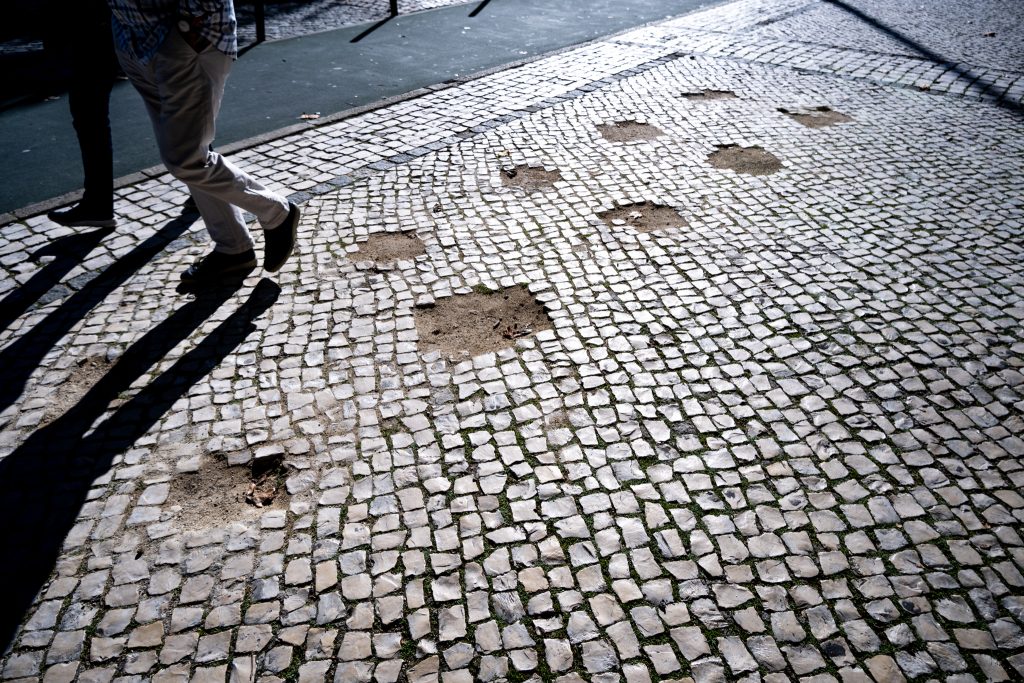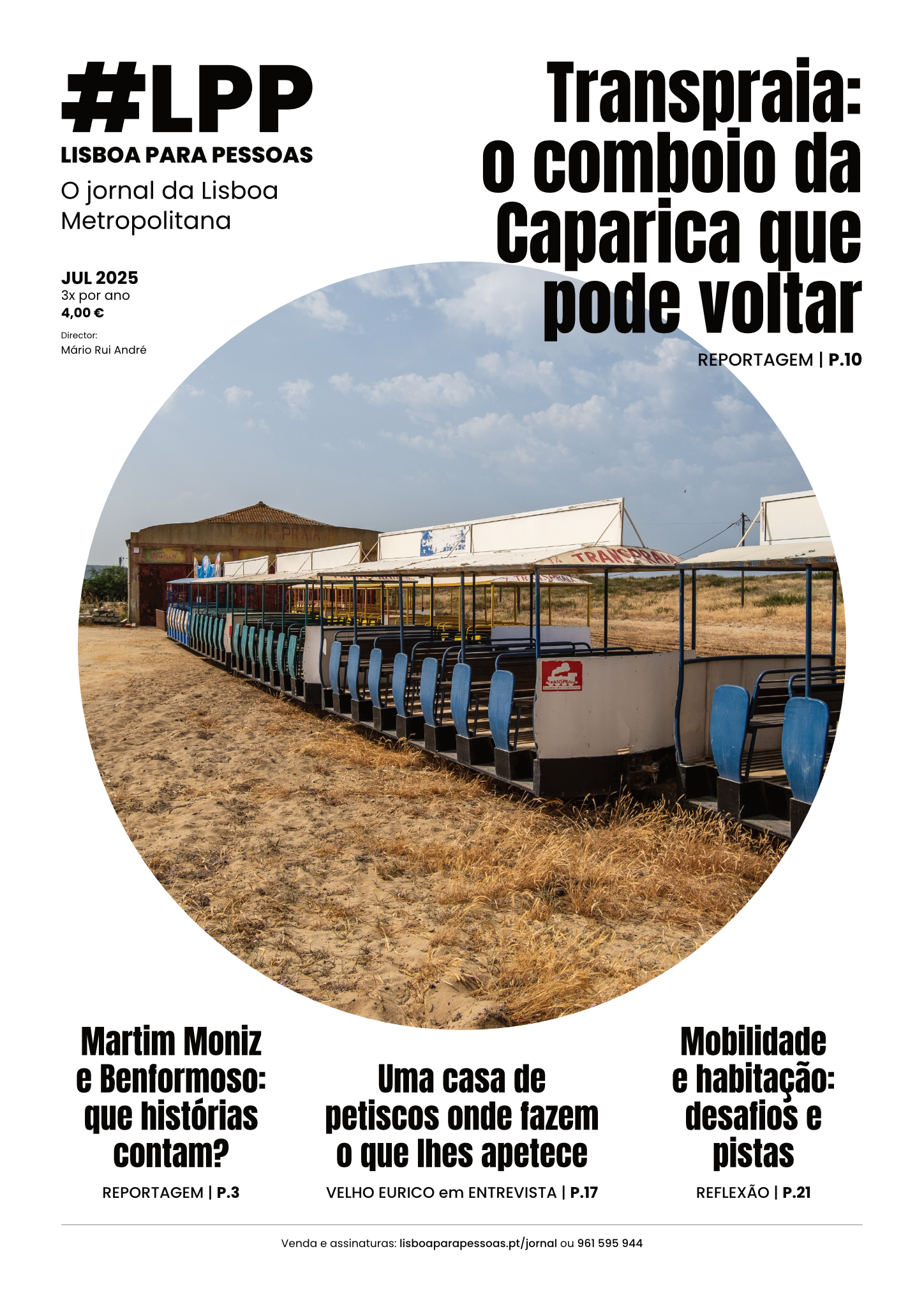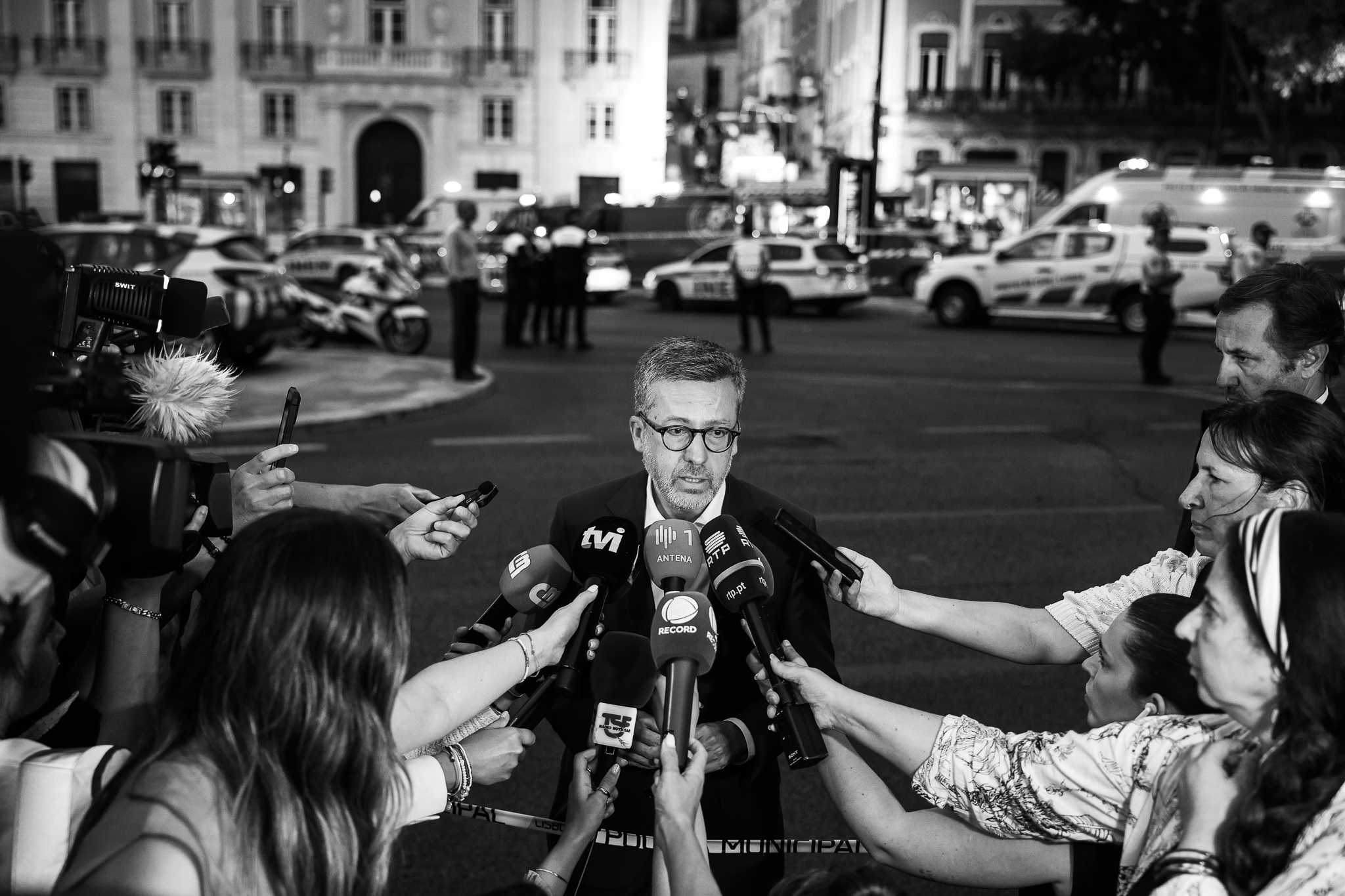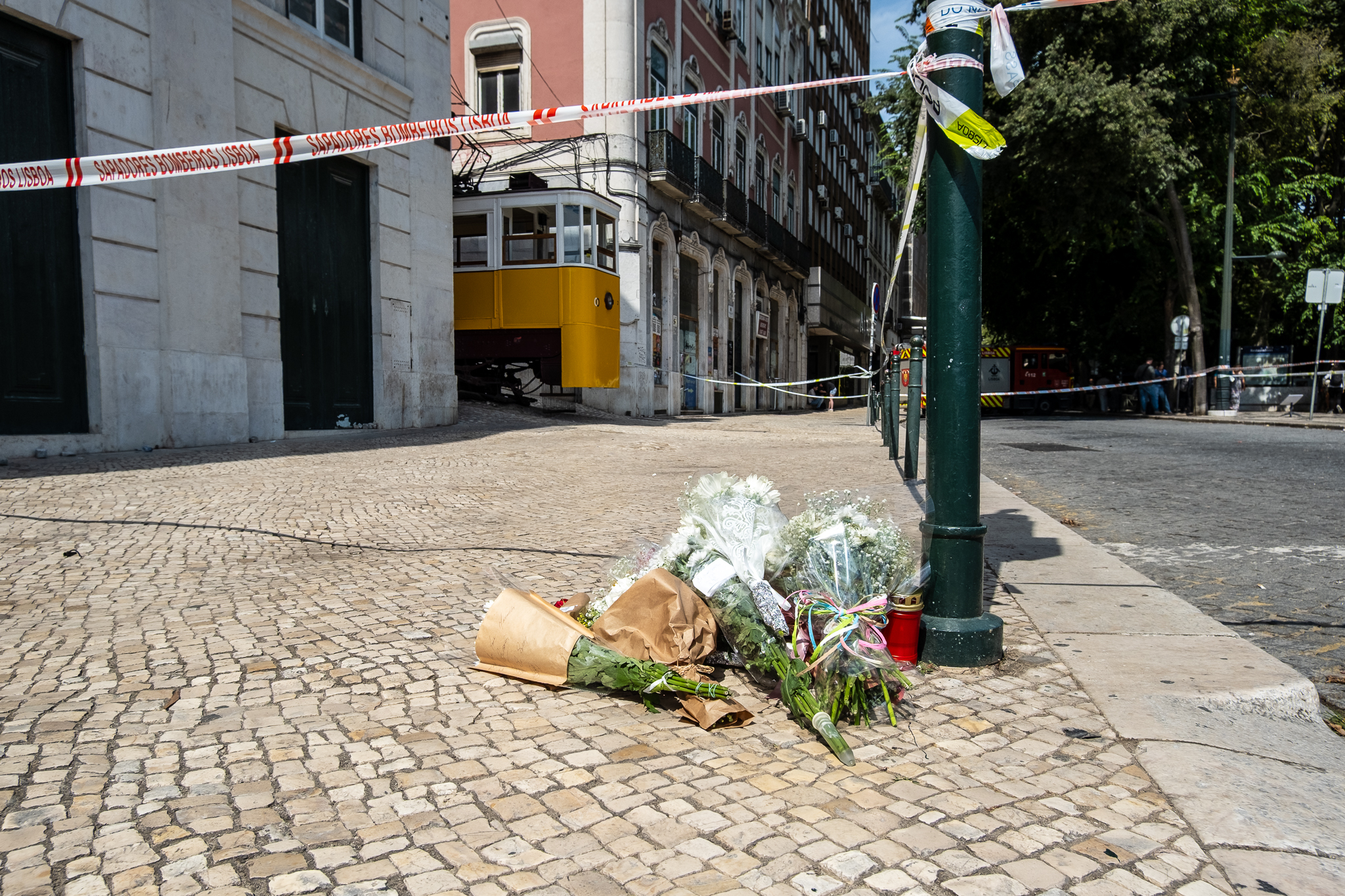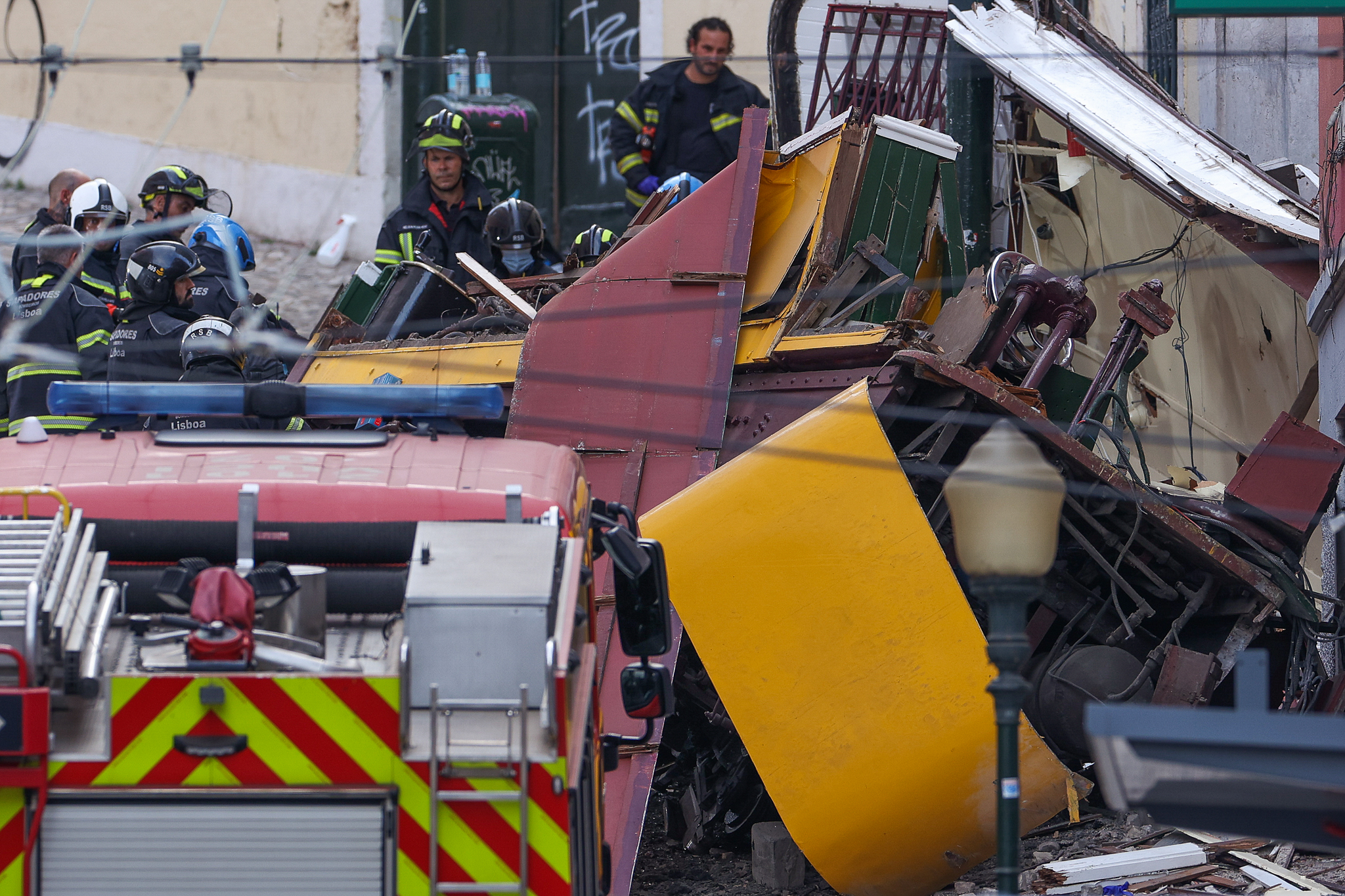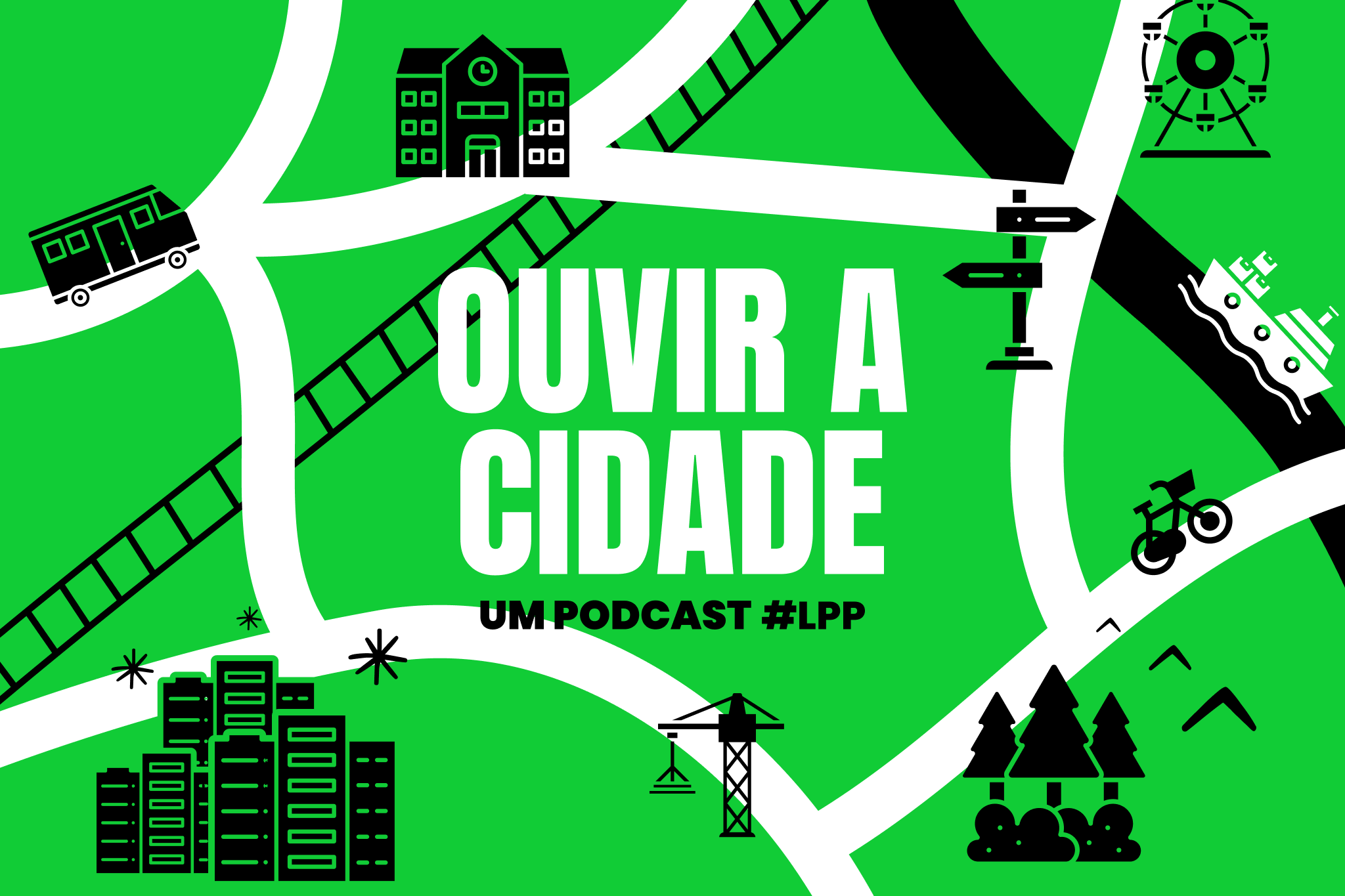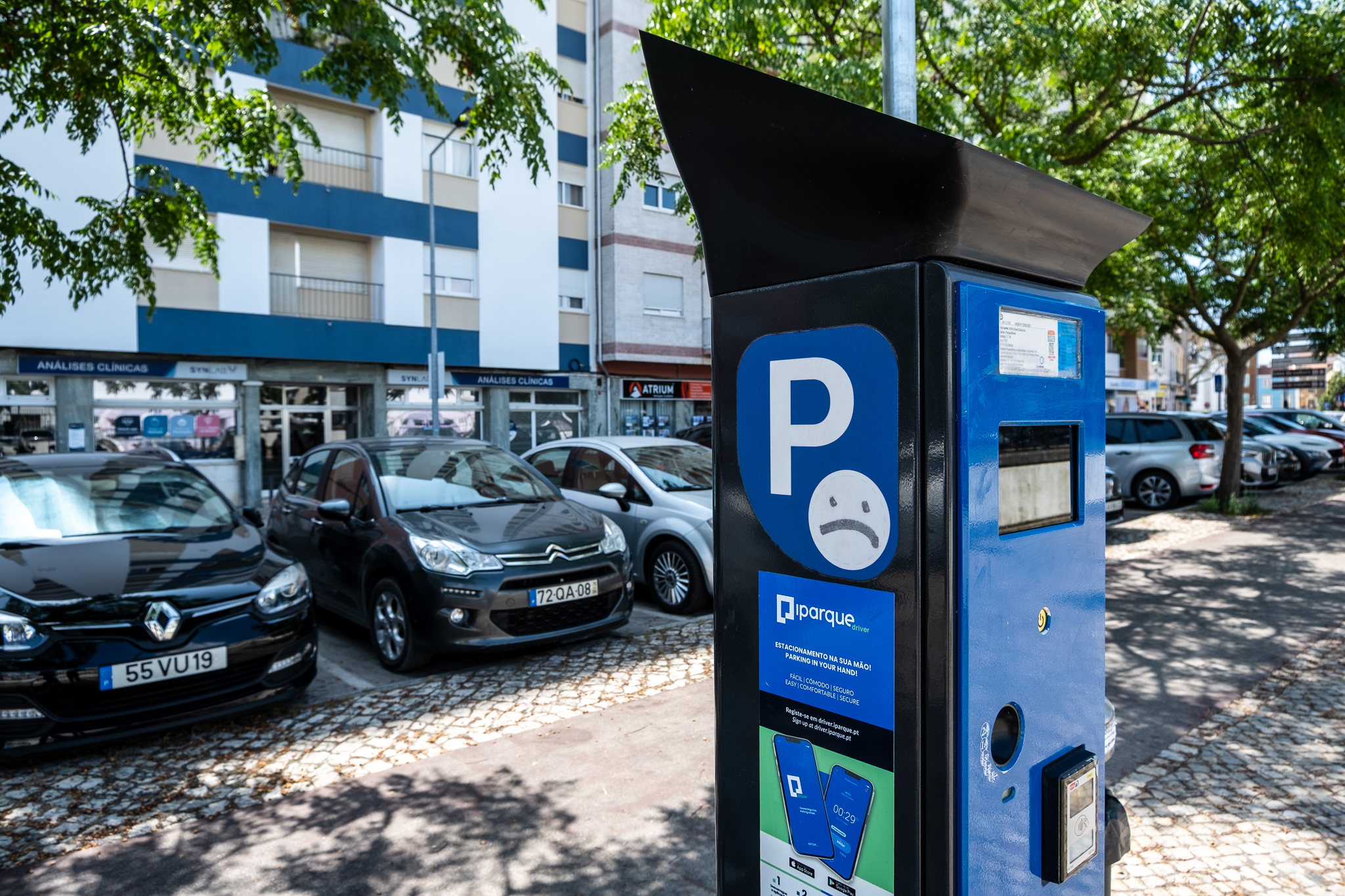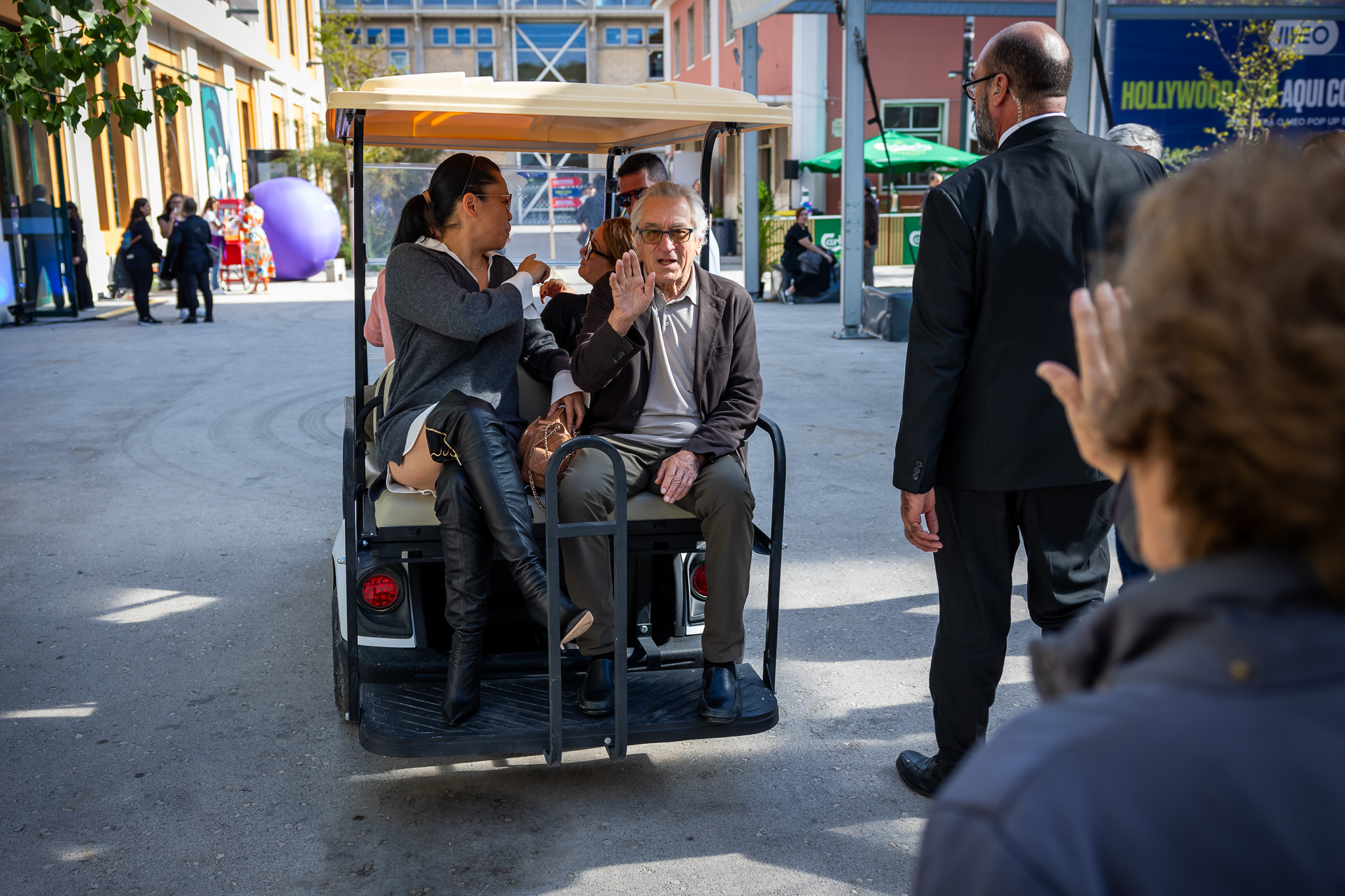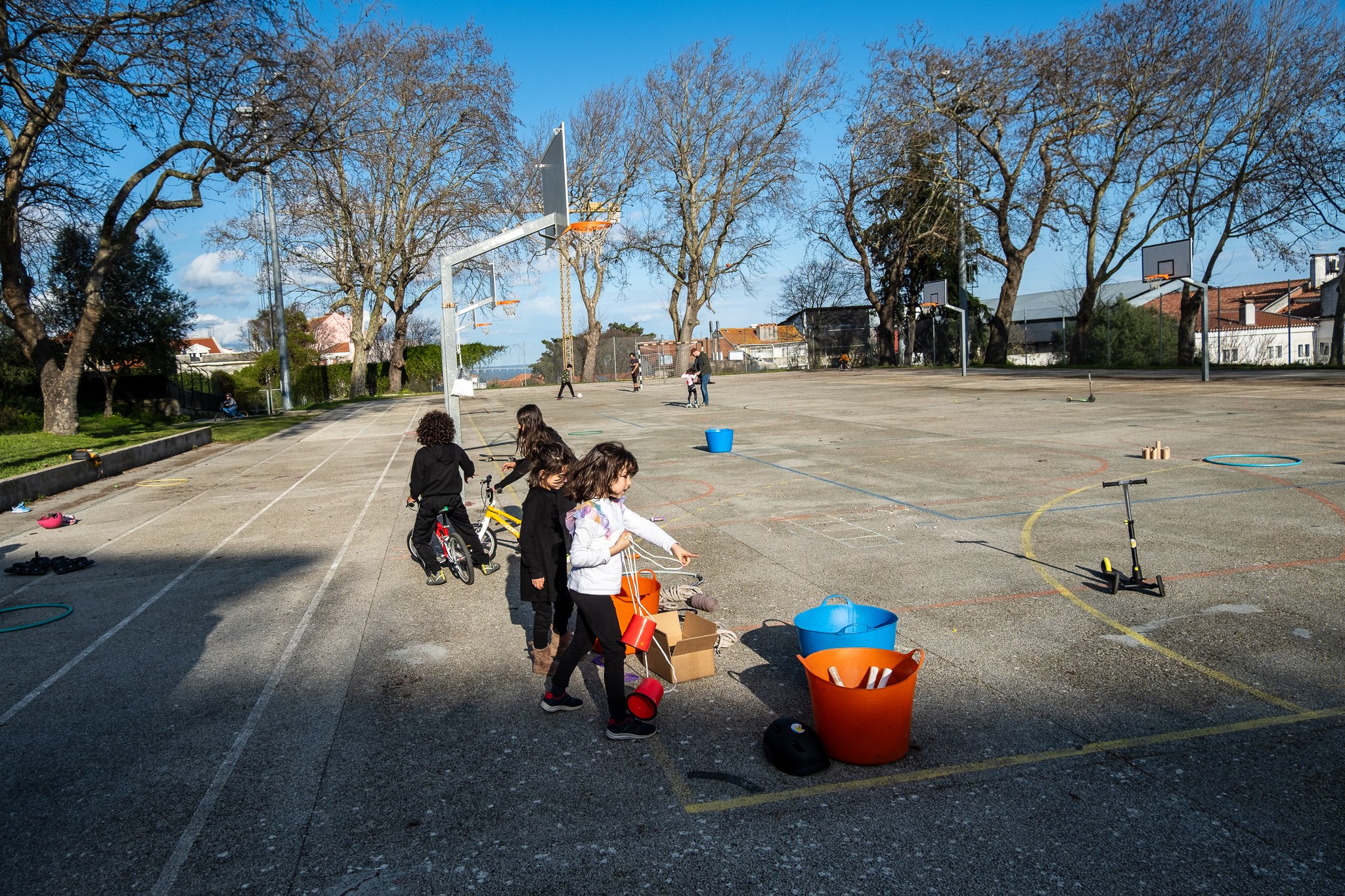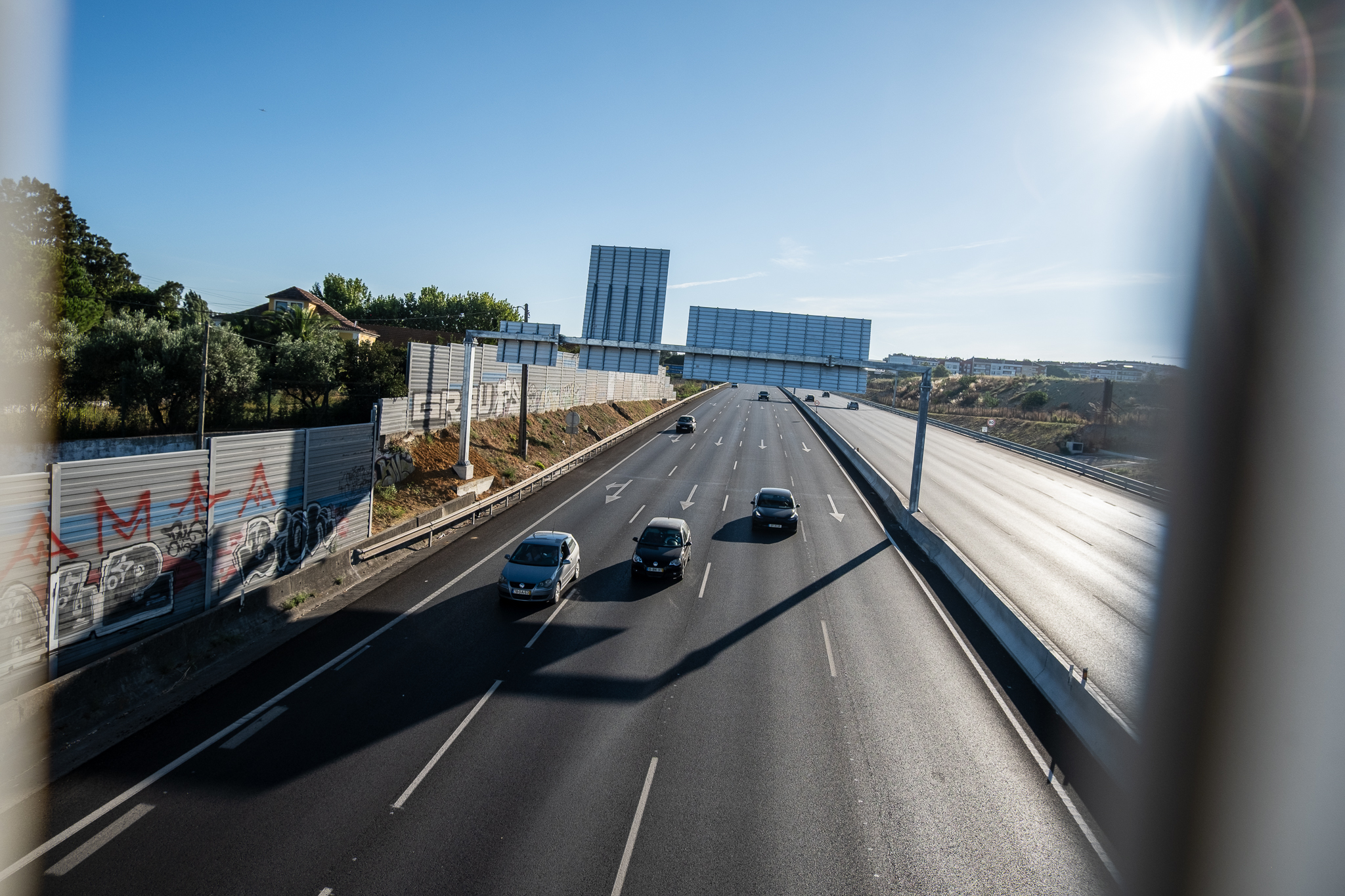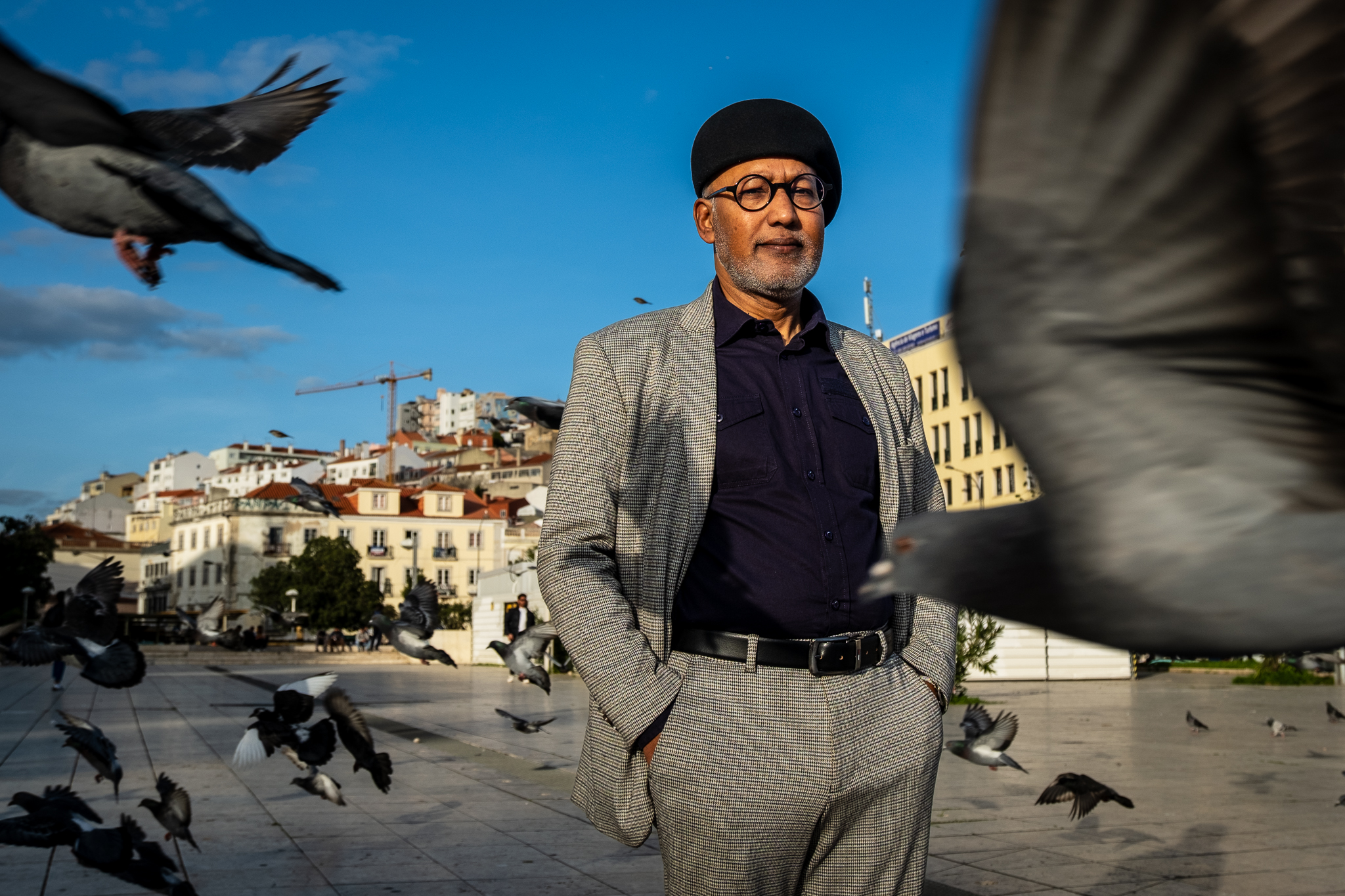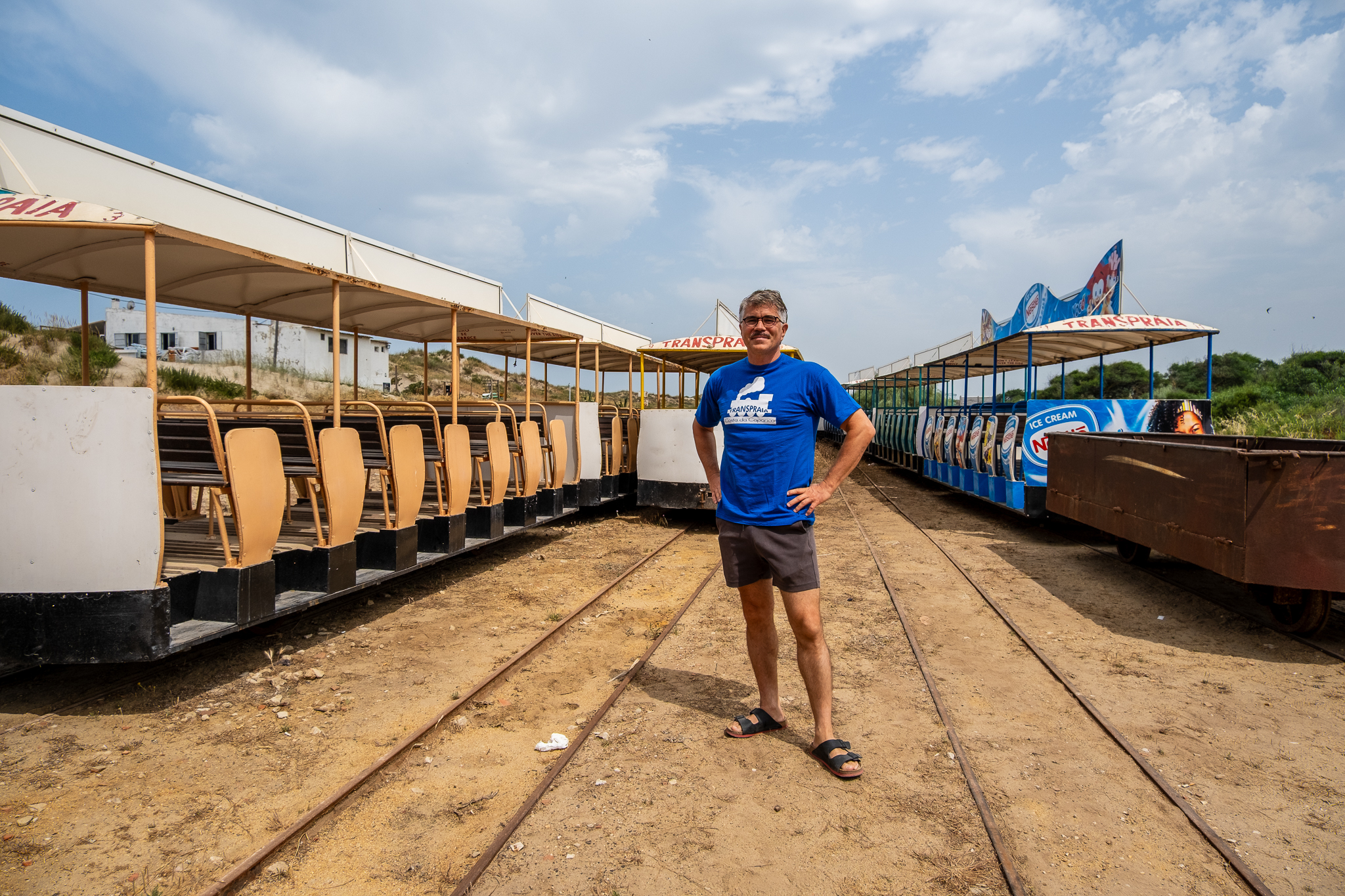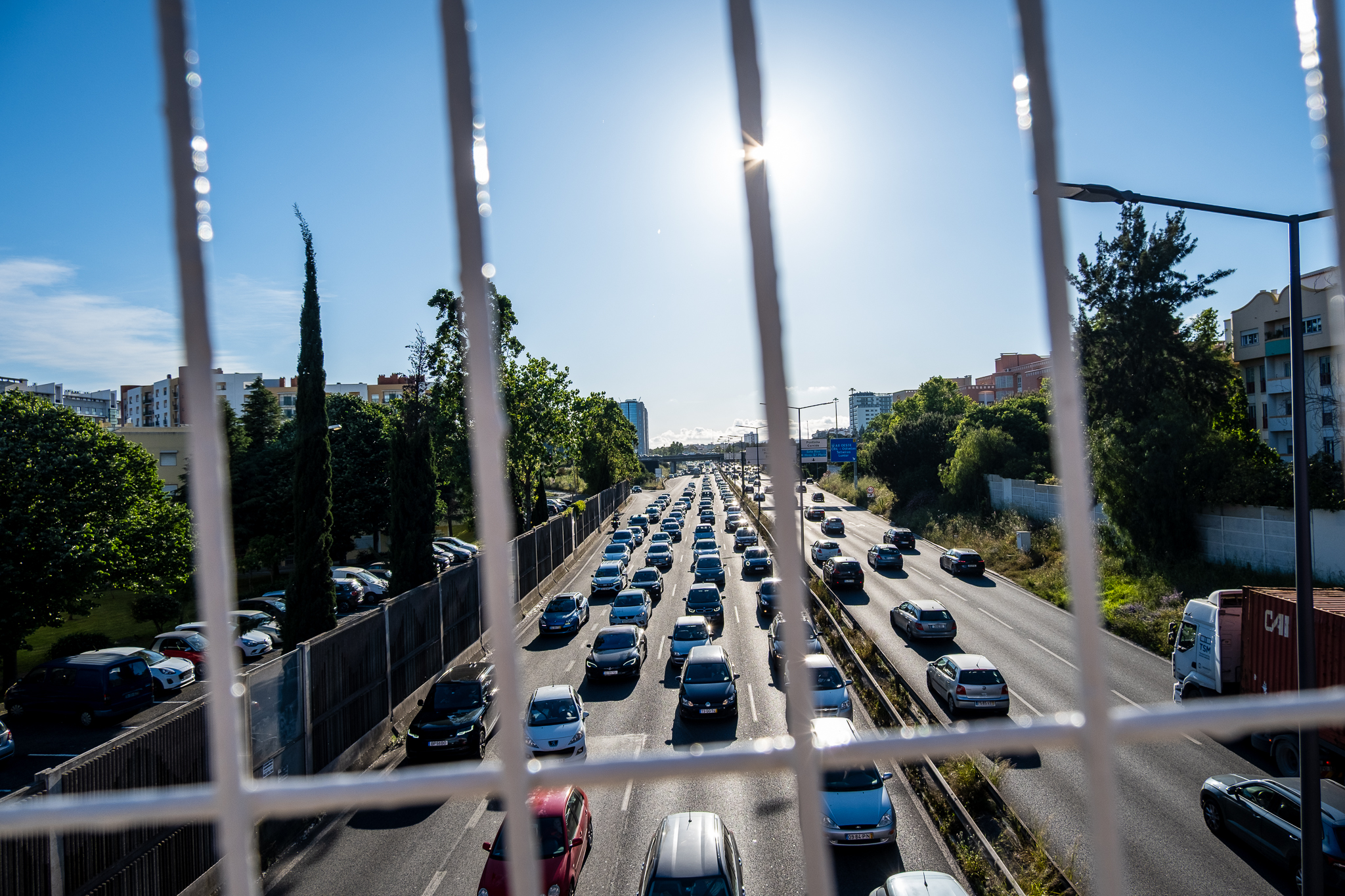O filho de 10 anos de Gonçalo ia sozinho de bicicleta para a aula de inglês pela ciclovia da Alameda dos Oceanos quando um agente da PSP o impediu de passar – nem mesmo com a bicicleta pela mão pôde seguir. À luz do Código da Estrada, uma pessoa com a bicicleta pela mão é…
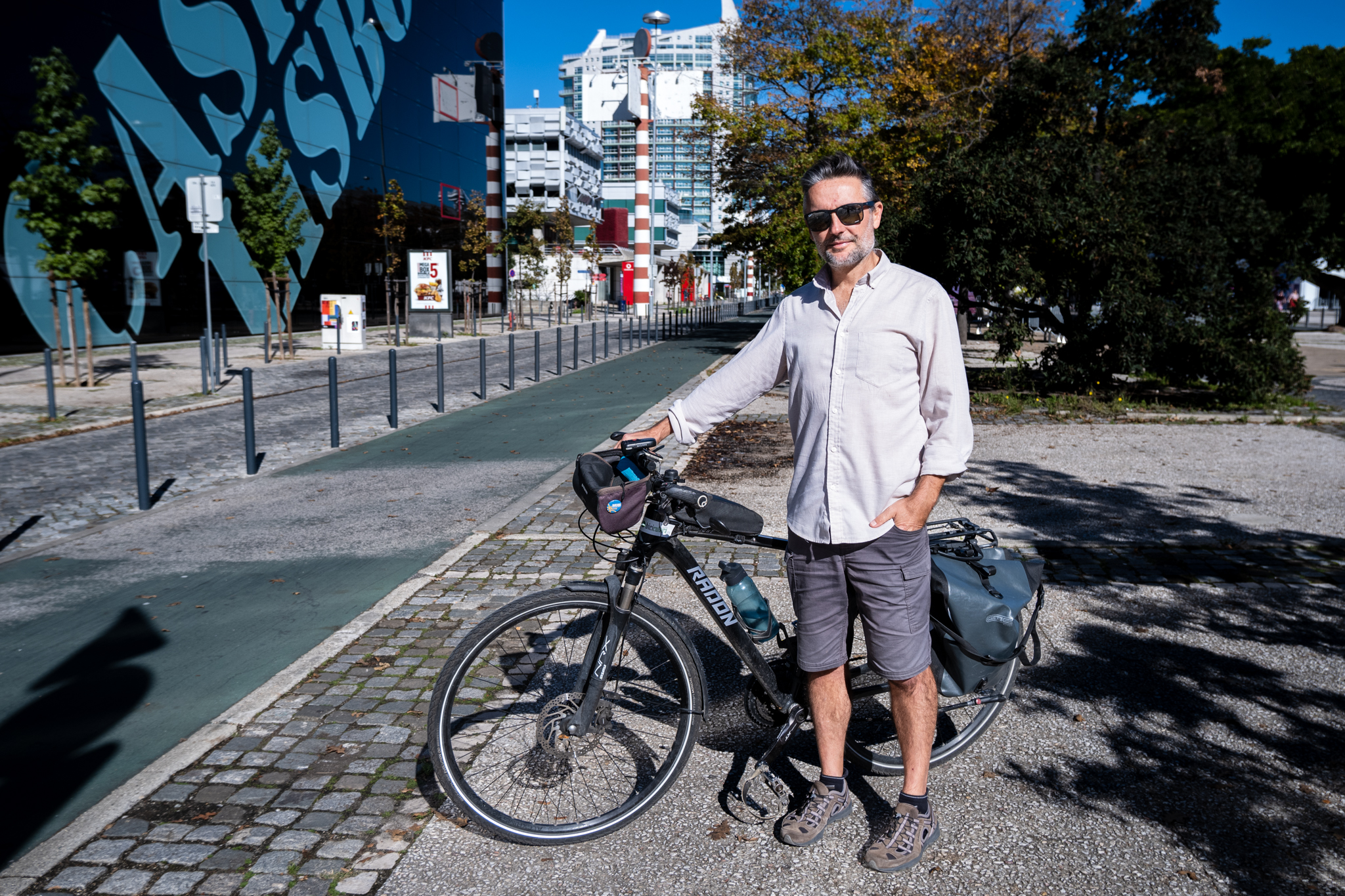
Um grande evento tem sempre um impacto na cidade onde se realiza, obrigando a condicionamentos de trânsito temporários e a mudanças em hábitos de mobilidade. À sexta edição do Web Summit em Lisboa, os moradores e visitantes do Parque das Nações já sabem mais ou menos com o que contar – com restrições várias na zona da Alameda dos Oceanos, principalmente na envolvente da FIL e da Altice Arena. Gonçalo Peres, que costuma fazer a sua vida urbana de bicicleta, também já sabia que o Web Summit iria afectar a ciclovia dessa alameda, um eixo importante para si e para muitas pessoas do Parque das Nações. No entanto, foi este ano surpreendido com proibições que descreve como aleatórias e discriminatórias.
Na passada sexta-feira, dia 4 de Novembro, último dia do Web Summit, aproximavam-se as 17 horas quando o filho de Gonçalo, de 10 anos, ia sozinho de bicicleta para a aula de inglês. Como habitual, deslocava-se no sentido de usar a ciclovia da Alameda dos Oceanos, até porque a escola fica nessa artéria. Mas, logo à saída da Rotunda dos Vice-Reis, foi intersectado por um agente da PSP, que lhe terá dito que não podia e que poderia ir pela paralela Avenida Dom João II. “Ele disse ao polícia que a mãe não o deixa ir por ali, só pela Alameda dos Oceanos”, contou Gonçalo, explicando que a Avenida Dom João II é uma artéria com muito trânsito e perigosa, em especial para crianças de 10 anos. Intimidado pela presença do agente de autoridade e obedecendo às orientações da mãe, o pequeno rapaz terá optado por ir pelo passeio – legalmente pode fazê-lo por ainda ter 10 anos.
Desde que o Web Summit aterrou em Lisboa em 2016 que a ciclovia da Alameda dos Oceanos – um importante eixo na freguesia do Parque das Nações e na rede ciclável da cidade – foi mantida desimpedida para circulação de quem se desloca de bicicleta ou trotineta. Esta ciclovia tem dois lados, sendo que em cada lado se circula num sentido (pista unidirecional); durante o Web Summit, um dos lados costuma estar cortado e o outro passa a ter dois sentidos, ou seja, é transformada numa ciclovia bidireccional temporária. Durante vários anos, foi inclusive colocada sinalética a indicar os dois sentidos temporários da ciclovia.
Tal não sucedeu este ano. Ainda assim, segundo a Junta de Freguesia do Parque das Nações, a ciclovia ia manter-se disponível num dos lados para quem dela precisasse de usufruir: “A ciclovia no sentido sul norte da Alameda dos Oceanos estará encerrada na zona do evento, passando a funcionar como bidirecional no lado poente”, pode ler-se numa página da Junta dedicada aos condicionamentos de trânsito por causa do Web Summit. Segundo Gonçalo Peres, que por ali passou várias vezes durante o evento, “as regras eram aleatórias”, conta, acusando os agentes da PSP de discriminar negativamente quem optava por se deslocar de bicicleta ou de trotineta.
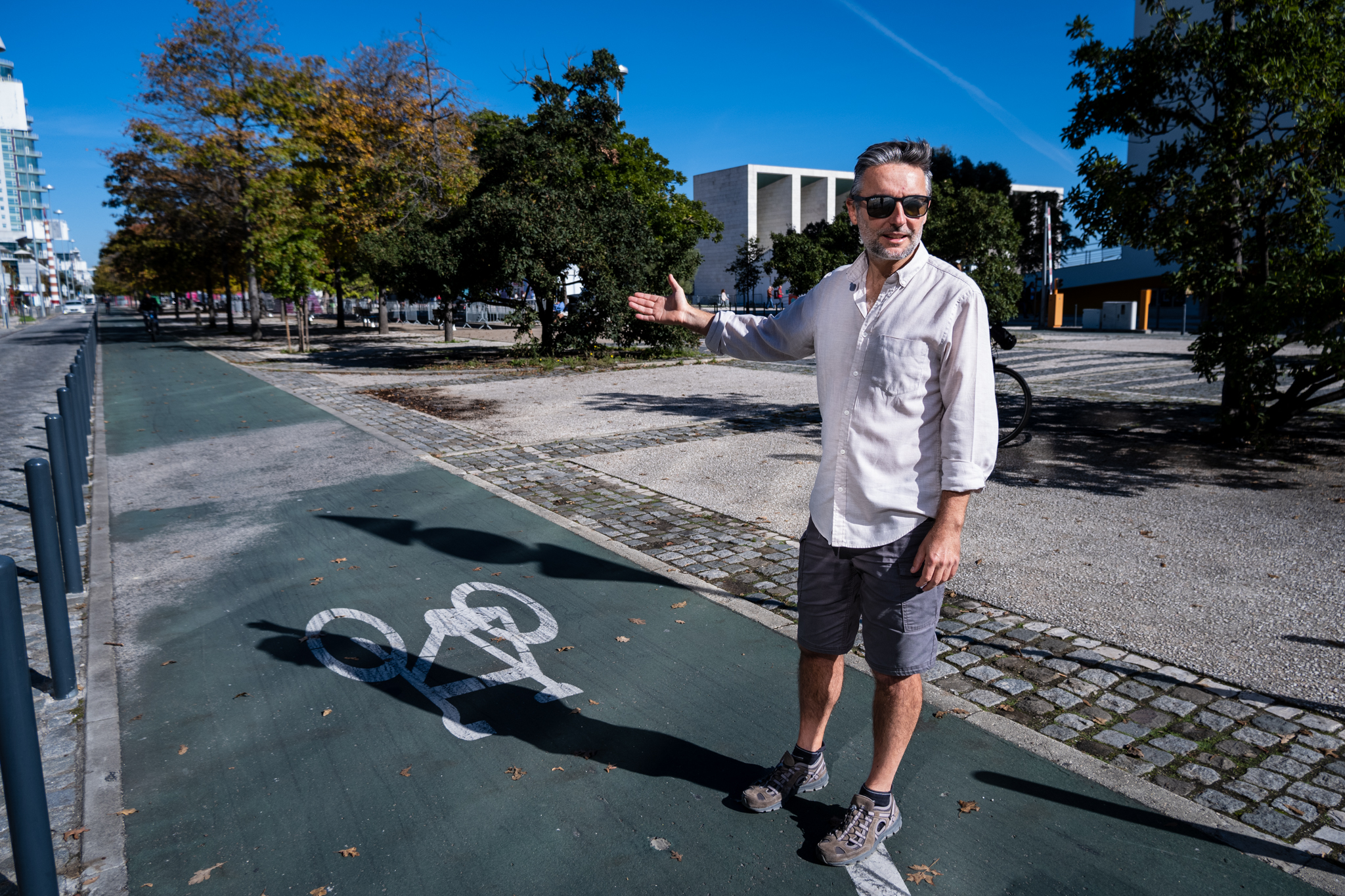
No mesmo dia em que ocorreu o episódio com o filho, também Gonçalo sentiu dificuldades com a sua mobilidade em bicicleta na zona da Alameda dos Oceanos. Depois de ter ido deixar livros à escola de inglês do filho, foi impedido de avançar pela ciclovia junto ao Casino. “Só não deixavam passar pessoas de bicicleta ou trotineta. E não deixavam passar de nenhuma forma, nem mesmo levando pela mão”, relata Gonçalo. A estrada ao lado da ciclovia estava, no entanto, desimpedida e havia automóveis a circular. “Se os carros estavam a passar, porque é que as bicicletas não podiam?” Foi esta pergunta que colocou ao agente da PSP que lhe terá bloqueado a passagem. “Ele respondeu-me que as pessoas a pé não andam na estrada”, numa alusão a uma utilização da ciclovia por peões e a consequentes conflitos com utilizadores de bicicleta e trotineta.
Gonçalo e mais uma família com dois filhos de bicicleta, que entretanto também ficara com a passagem bloqueada, ainda ficaram a falar com os agentes da PSP durante “uma hora a uma hora e meia”. Ao serem confrontados com uma “decisão superior” e com uma inflexibilização, pediram para falar com um superior, que, segundo Gonçalo, “apareceu com uma atitude diferente” – pois residiria nos Olivais e teria vindo para o evento de trotineta – e “um pouco confuso com o facto de não deixarem as pessoas passar a pé com a bicicleta pela mão”. “As regras não eram nada claras”, lamenta Gonçalo. Noutros dias, houve agentes da PSP que o tinham deixado seguir com a bicicleta pela mão, outros que lhe terão dito que a proibição era das 9 às 19 horas, e outros ainda que não disseram nada. Certo é que durante a realização do Web Summit havia várias pessoas a circular de bicicleta pela ciclovia da Alameda dos Oceanos, por exemplo, apanhando uma GIRA a meio do trajecto onde não haveria presença de agentes ou passando inconscientemente por zonas fora do olhar dos polícias, como o Lisboa Para Pessoas conseguiu comprovar.
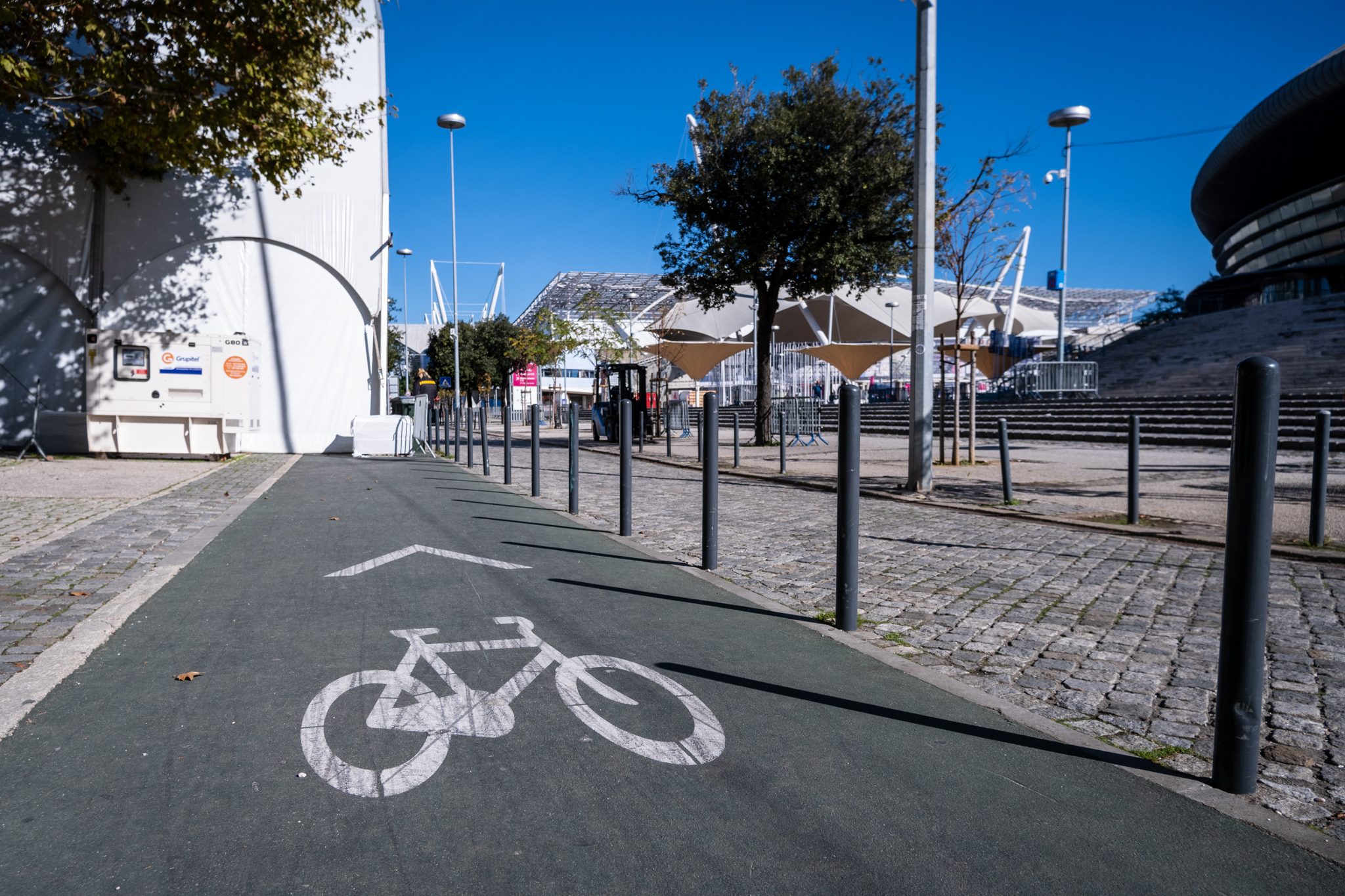
“Os carros têm imensas alternativas ao contrário das bicicletas”, refere o ciclista urbano, que diz que irá apresentar uma queixa formal em relação a esta situação. Se existem várias artérias paralelas para onde é possível desviar a circulação automóvel, a Alameda dos Oceanos é única do ponto de vista da mobilidade ciclável – o único eixo que atravessa o Parque das Nações de uma ponta à outra e que apresenta uma ciclovia segregada e segura.
Para Gonçalo, não faz sentido permitir a circulação automóvel na estrada mas impedir as bicicletas de seguirem, seja por essa mesma estrada, ou com o veículo pela mão. “Não faz sentido esta discriminação”, aponta, realçando que a circulação dos carros pode também colocar em risco peões e outras pessoas e que existem formas de salvaguardar a coexistência segura entre todos. Para solucionar as preocupações de eventuais conflitos entre ciclistas e peões, numa altura de maior afluência de pessoas, poderia ser melhor separada a ciclovia do restante espaço com gradeamentos, convidando os participantes do Web Summit e outras pessoas que por ali passam a não usar a pista ciclável para caminhar e optar pelo passeio (que é bastante amplo). Poderia também ser colocada sinalização para sensibilizar os utilizadores de bicicletas e trotinetas para uma redução da velocidade e atenção redobrada durante os dias do evento, em que a presença de pessoas a pé é naturalmente maior.
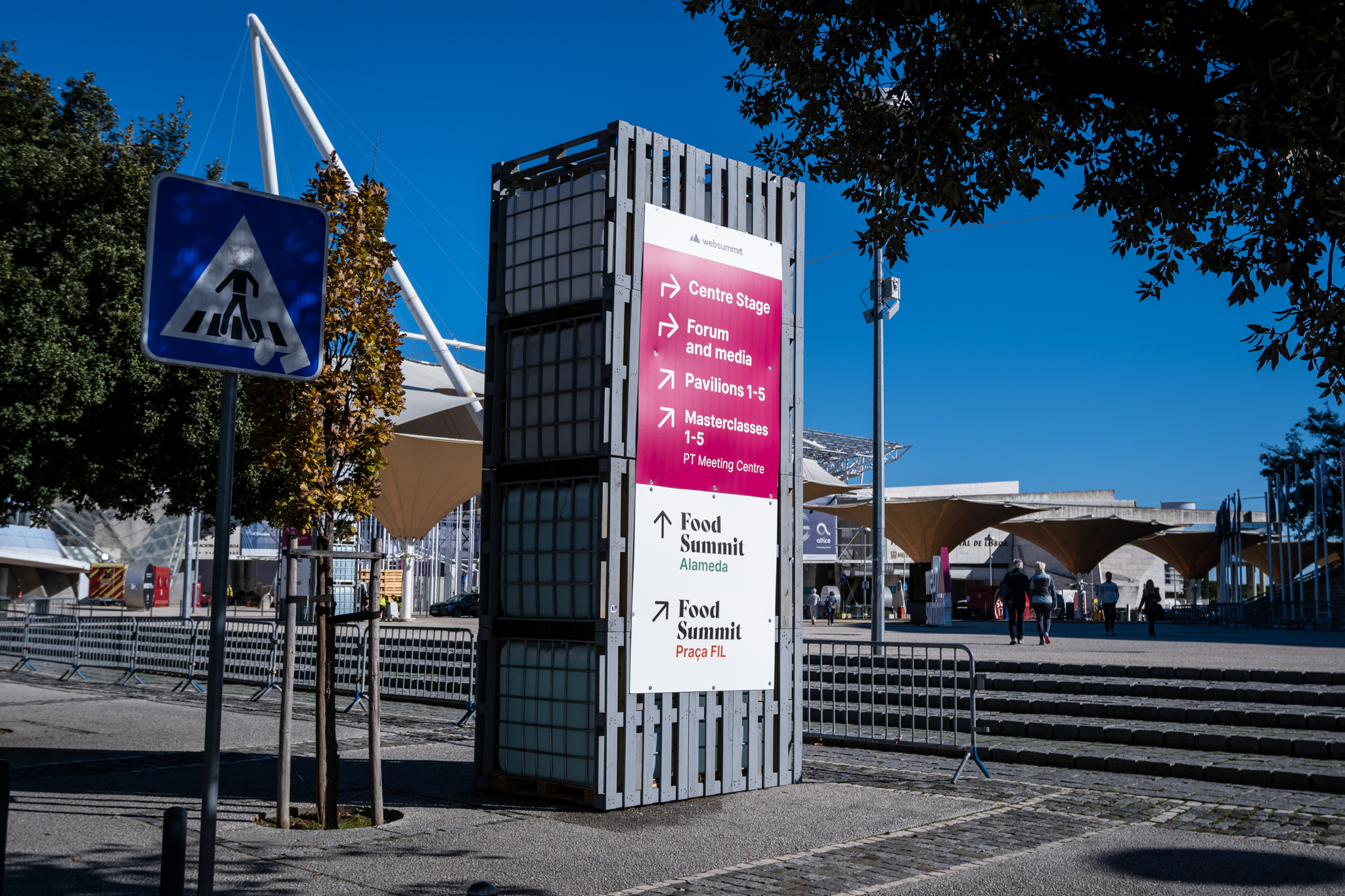
O Código da Estrada é muito claro em relação a esta situação. Se é verdade que o Artigo 4º indica que se “deve obedecer às ordens legítimas das autoridades com competência para regular e fiscalizar o trânsito, ou dos seus agentes” – o que incluir orientações sobre condicionamentos temporários –, também é verdade que, no Artigo 104º, “é equiparado ao trânsito de peões (…) a condição à mão de velocípedes de duas rodas sem carro atrelado” – pelo que alguém que leve uma bicicleta pela mão é um peão igual a qualquer outro peão, não podendo ser discriminado – e que, no Artigo 78º, as ciclovias só podem ser utilizadas por peões “quando não existam locais que lhes sejam especialmente destinados” – o que não é o caso na Alameda dos Oceanos, onde a zona de passeio tem vários metros de largura.
O Web Summit não é um caso único no que toca aos seus impactos na cidade. Ainda no Verão passado, o festival Rock In Rio Lisboa encerrou o Parque da Bela Vista durante vários meses, o que deixou muitos utilizadores da bicicleta como meio de transporte sem uma ligação entre os Olivais e o Areeiro (e vice-versa). Face às queixas e à pressão de partidos da oposição, o Vereador da Mobilidade, Ângelo Pereira, acabou por prometer resolver a situação nos festivais que futuramente se realizariam naquele Parque, como foi o caso do MEO Karolama, referindo que a Bela Vista continuaria disponível para circulação a pé e de bicicleta durante as montagens e desmontagens e que encerraria apenas nos dias dos festivais.
O impacto do Web Summit no Parque das Nações não é pequeno. A realização desta grande conferência de tecnologia e empreendedorismo obrigou à remoção de estacionamentos para bicicletas e ainda de centenas de pilaretes que protegiam a ciclovia da Alameda dos Oceanos no lado em que esta esteve cortada. Estas infraestruturas serão, naturalmente, respostas, mas a sua remoção não deixa de representar um desperdício significativo, uma vez que, pelo menos no caso dos pilaretes, os mesmos foram cortados e a reposição terá de ser com novos pilaretes.
